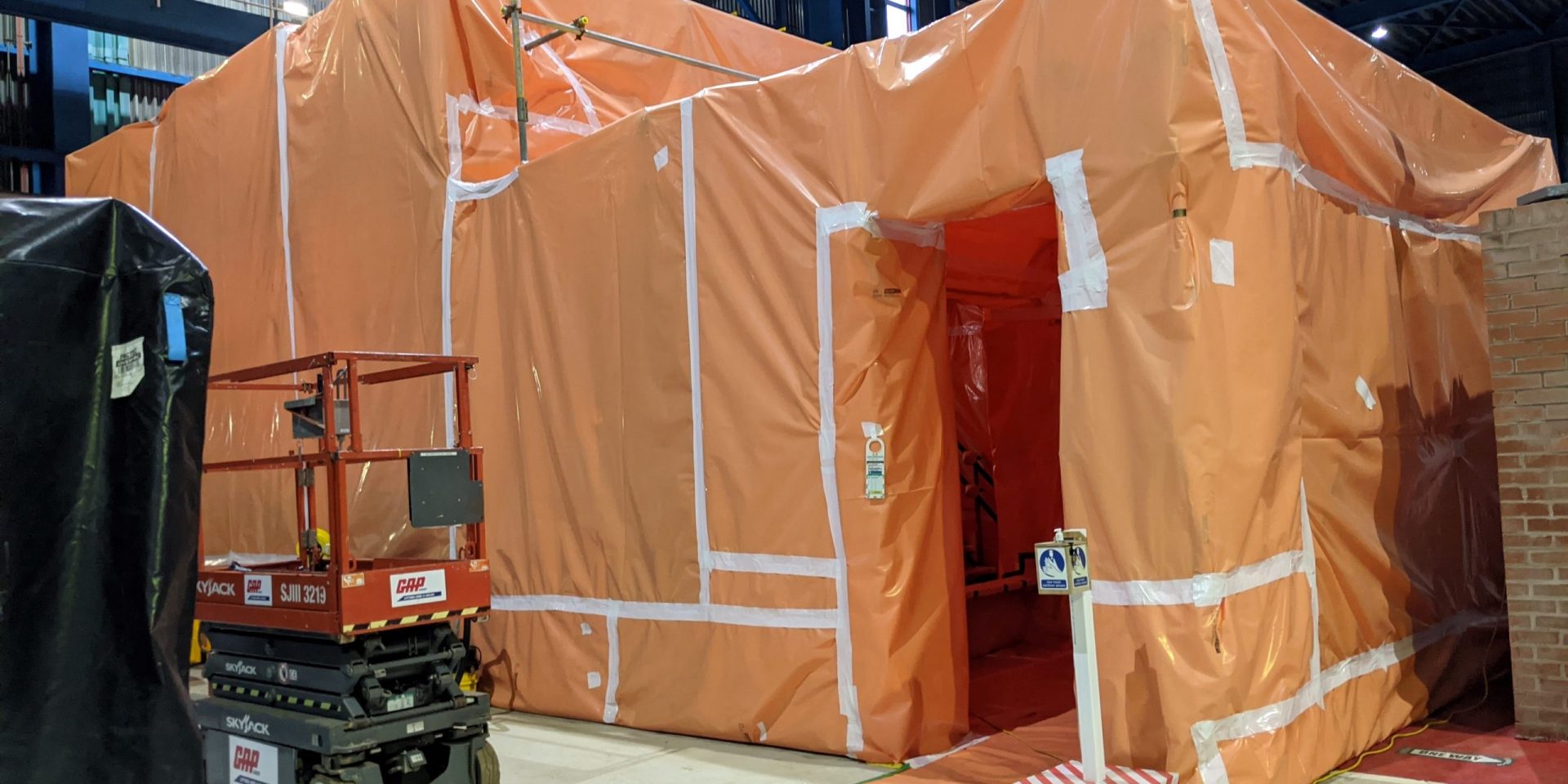Sellafield Ltd have a requirement for a second transport flask for sludge recovered from a pond during their desludging operations. In order to prevent the costly purchase of an additional flask, Sellafield decided to re-purpose an existing SWEF flask which has been in service for approximately 15 years. The re-use of the flask would make a saving of approximately £3 million and avoid the need to dispose of the redundant SWEF flask as waste. To enable the flask to be re-purposed, a new centraliser frame and sludge container will be installed into the flask and a new lid fitted that will permit sludge filling without its removal.
To allow the centraliser and sludge container to be fitted into the flask, the internals of the flask need to be at a maximum of C3 contamination levels. A HP&S survey conducted back in 2018 determined the flask was at C5 levels, with contamination measured by probe being ‘off scale’ i.e. greater than 100,000 CPS. The survey readings meant that the flask maintenance team could not work on the flask within their facility. As a result Sellafield Ltd engaged the Shepley Engineers Decontamination team to undertake the the decontamination of the flask to C3 levels, or lower if at all possible.
After an exhaustive study into potential facilities available for this work to be carried out, taking into account the flask weight of 30 tonnes and the lid being 8 tonnes, the only option open to the SEL Decontamination team was to erect a temporary C5 facility within a C2 building. To access the internals of the flask, a designed steelwork lifting frame capable of lifting the 8tonne lid was erected by SEL’s mechanical operatives and load tested to lift the lid and position it on a set down table. In order to undertake working on the C5 flask internals, Enigma Industrial Services were engaged to erect a designed, double-skinned scaffolding working enclosure with working platforms and subchange areas, and was extracted using a HEPA filtered mobile filtration unit.
The SEL Decontamination team were an integral part of the safety case team, produced the PMP and associated safety documentation for the task, as well as providing the POW role for this project. This was in addition to the hands on decontamination of the flask. The SEL Decontamination team successfully decontaminated the flask down to a level well within the required C3 levels, with a max contamination hot spot level of 120CPS within the flask. The decontamination works on the Flask body and the lid were completed within 3 days, beating the predicted 5 day estimate. The completed works resulted in the flask decontamination being achieved ahead of schedule, allowing SL to meet a high priority key milestone as well as a considerable cost saving.





